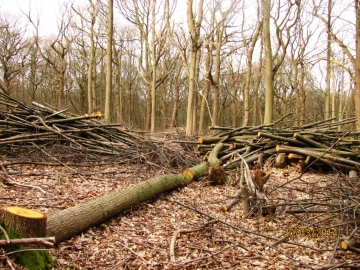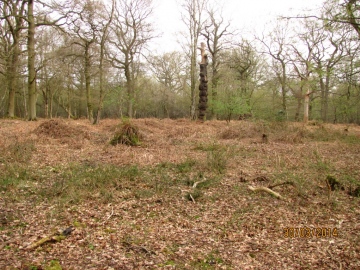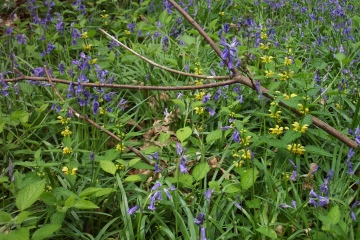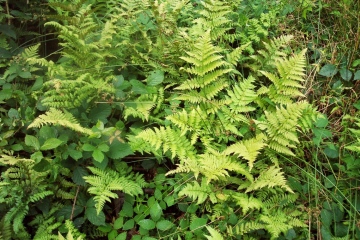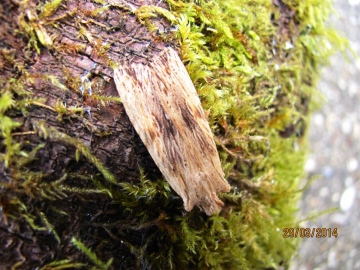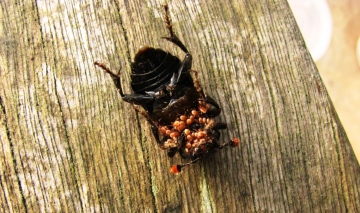In areas where Hornbeam and Birch dominate and where the stools are not covered properly all the trees can be killed by deer. The second photo, taken in the adjoining Deerslade Wood, shows an example of this. This area was coppiced by local woodsman Martin Bacon but, sadly, he died suddenly while the work was being carried out and the stools were never covered. As you can see the clearing contains nothing but bracken and rushes apart from a single small Elder to the rear of the site.
In Birch Spring the contractors have surrounded the coppiced area with 7`-8` high plastic netting to try and deter the deer. Curiously, the poles do not seem to have been hammered into the soil and so the whole structure wobbles around in the breeze and if not maintained has a tendency to collapse. This is what has happened in Ellis Wood, where the stools were not covered when the fence was erected. The result is another site where the coppice has been eaten to death. Arguably, cleared areas like this probably have some conservation value but if it happens too often it will do nothing for the profitability of the wood! Where the work is done properly a ground cover of bramble does eventually develop and provides some nesting habitat for birds for a few years before it gets shaded out but the ground flora that flourished in the increased light, even in the recent past, is now eaten by deer as soon as it pops its head above the ground! There was a herd of 100+ Fallow Deer on the edge of Stoneymore today. One of this herd had been badly injured by a car as it attempted to cross the nearby road and someone from a local equestrian centre came out to shoot it while I was there.
One plant not eaten by the deer is the Bluebell and the first flowers were showing well in Writtle Park Wood today, along with some Yellow Archangel. Narrow Buckler was also well advanced for the time of year as it is not very winter green, although the photos here are cheating a bit as they were taken a few years ago!
The garden moth trap is catching double the number of moths than during the similarly mild March in 2012. This may be partly due to the exceptionally mild weather throughout the winter but the fact that they now turn the street lamps off in the village at midnight may also have something to do with it. I use a 60W UV light rather than the more powerful 125W MV used by many moth trappers so the increased darkness probably adds to its efficiency, especially as my garden has ten street lamps within 75 yards of it!
A pleasing capture recently was this Pale Pinion, a species new to me. In ‘The Moths of Essex’, published in 2004, it is listed as a vagrant, the only two records occurring as far back as 1903. In the past ten years though it has started to appear in ever increasing numbers and there have been several sightings reported this spring already. It is not a specialist feeder so perhaps our changing climate has encouraged its expansion, as it has done for several other species recently. A more regular capture at this time of year is the Sexton or Burying Beetle Nicrophorus humator. This one is carrying some spare baggage in the form of gamasid mites which apparently use their host as a taxi service to new areas without doing it much harm!























